Bar Gratings in Canada – The Complete Guide
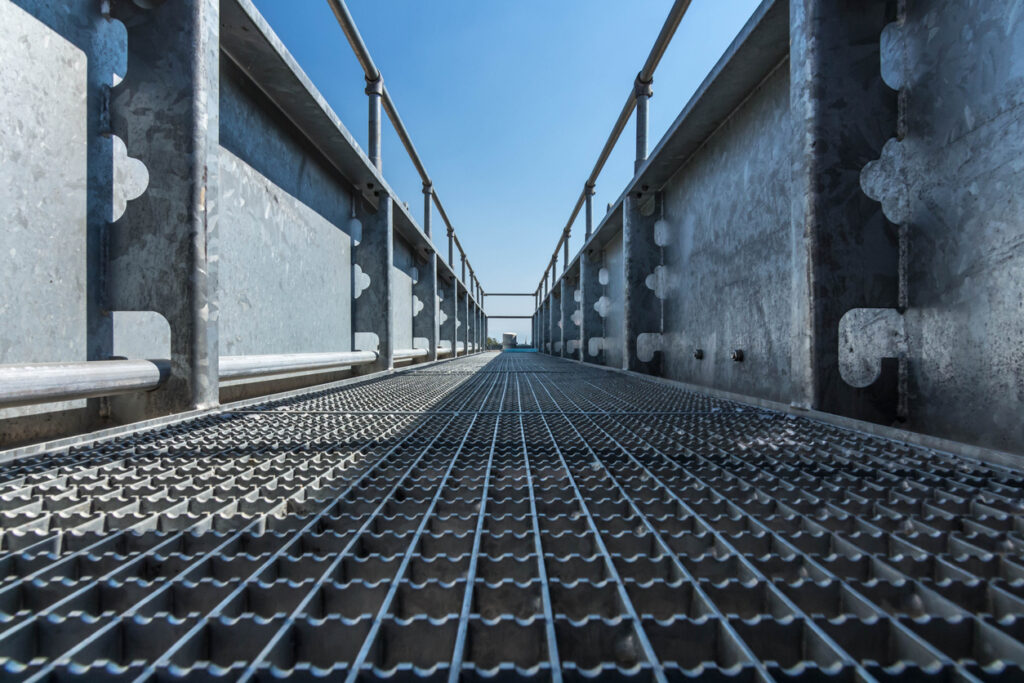
Introduction
Discover bar gratings in Canada including riveted, welded, pressure locked and squeeze locked types for industrial and commercial use.
Walk across a factory floor, climb an industrial stairway, or step onto a bridge platform, and chances are you’re standing on bar gratings. These open-grid flooring solutions provide the strength and reliability that industries depend on while also allowing for drainage, ventilation, and long-lasting durability.
In Canada, bar gratings are widely used across construction, energy, transportation, and public infrastructure projects. They are the unsung heroes of safe walkways, drainage covers, and platforms. Strong enough to handle heavy vehicles, yet versatile enough for architectural applications, bar gratings deliver performance in ways that other materials cannot.
This complete guide will help you understand everything you need to know about bar gratings in Canada.
Whether you’re an engineer, contractor, architect, or municipal planner, this guide will give you the clarity you need to choose the right grating for your project.
Table of Contents
Why Bar Gratings Matter in Canada
In industries where reliability and safety are top priorities, bar gratings are more than just a design choice—they are a necessity.
The Problems They Solve
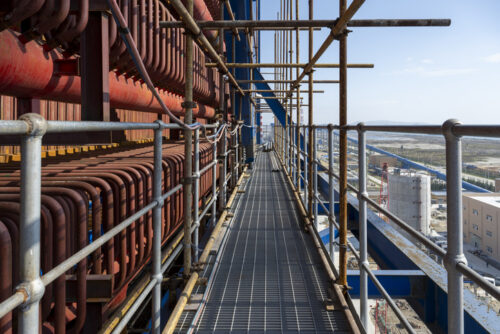
- Heavy Load Requirements
Industrial flooring often faces extreme weight. Forklifts, construction vehicles, or heavy machinery place tremendous stress on surfaces. Bar gratings, with their steel or aluminum construction, distribute weight evenly across their bearing bars, ensuring long-term performance without bending or buckling.
- Safety Hazards
Safety compliance is non-negotiable. Slips, trips, and falls are some of the most common workplace accidents in Canada. Bar gratings provide slip-resistant surfaces and prevent water or debris buildup, which keeps walkways safe year-round—even in snow, ice, or rain.
- Ventilation & Drainage
Factories, power plants, and transit systems all benefit from airflow and drainage. The open-grid design of gratings allows light, air, and water to pass through, which is critical in environments like wastewater facilities, chemical plants, and stormwater systems.
- Durability and Low Maintenance
Industrial facilities and municipalities can’t afford downtime. Gratings, especially when galvanized or made of stainless steel, require little upkeep and last for decades in harsh conditions.
- Versatility
Different applications call for different solutions. The wide variety of construction types and materials—riveted, welded, pressure locked, squeeze locked, steel, aluminum, or stainless—ensures that a suitable option exists for virtually any project.
In short, bar gratings solve the everyday challenges of strength, safety, drainage, and longevity—making them indispensable in Canadian industries.
The Core Types of Bar Gratings
Now that we understand why gratings matter, let’s take a closer look at the four main types. Each has unique strengths and applications.
1. Riveted Bar Gratings
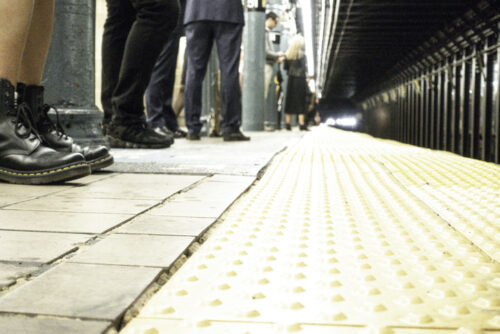
Riveted gratings are the oldest form of grating construction, yet they remain one of the strongest. The design involves attaching crimped connecting bars to load-bearing bars using rivets. This creates a structure with exceptional durability and resistance to fatigue.
Key Advantages:
- Outstanding strength-to-weight ratio
- Performs well in environments with vibration or repeated stress
- Long-lasting even under heavy, concentrated loads
Applications in Canada:
- Bridge decks in municipalities
- Public walkways exposed to high foot traffic
- Mining platforms in northern Canada
- Transit facilities requiring strong flooring for both pedestrians and vehicles
Why Choose Riveted Gratings?
When reliability is critical and failure is not an option—such as bridge flooring or oil platforms—riveted bar gratings offer unmatched durability.
Riveted Bar Gratings: Strength and Reliability for Heavy Loads
2. Welded Bar Gratings
Welded gratings are the most common type in use today. Bearing bars are fused to cross rods by resistance welding, creating a single rigid panel. This method produces an efficient, versatile product at scale.
Key Advantages:
- Cost-effective without sacrificing strength
- Excellent drainage and ventilation due to open spacing
- Suitable for custom fabrication and cutting
Applications in Canada:
- Walkways and catwalks in factories
- Stair treads in commercial buildings
- Drainage trench covers for municipalities
- Platforms in warehouses and energy facilities
Why Choose Welded Gratings?
They balance cost, strength, and versatility. If you’re working on an industrial or municipal project with standard load requirements, welded gratings are often the go-to choice.
3. Pressure Locked Bar Gratings
In pressure locked gratings, cross bars are forced into pre-punched bearing bars under extreme pressure. This creates a tight, secure fit without welding, giving the grating a smooth and uniform look.
Key Advantages:
- Sleek appearance suitable for architectural applications
- Strong load-bearing capability
- Custom spacing for unique projects
Applications in Canada:
- Transit station flooring
- Public parks requiring durable yet attractive walkways
- Industrial platforms in sectors where strength and aesthetics are both important
Why Choose Pressure Locked Gratings?
When appearance matters just as much as function—like in public infrastructure projects or architectural facades—pressure locked gratings are a smart choice.
4. Squeeze Locked Bar Gratings
Squeeze locked gratings use mechanical pressure to force cross bars into bearing bars until they lock in place. The result is a grid with excellent precision and consistency.
Key Advantages:
- Tight mechanical connection without welding
- Strong and uniform surface
- Suitable for close bar spacing where smaller openings are required
Applications in Canada:
- Stair treads for institutional and commercial facilities
- Pedestrian walkways and bridges
- Energy platforms requiring a precise fit
Why Choose Squeeze Locked Gratings?
When precision and uniformity are critical, squeeze locked gratings provide reliable results that hold up over time.
Pressure Locked and Squeeze Locked Gratings for Modern Architecture
Materials and Finishes
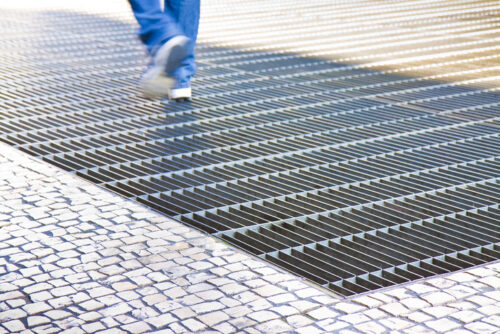
The type of grating you choose is only half the equation. Materials and finishes are just as important to ensure longevity and performance.
Carbon Steel
- Strong, affordable, and versatile
- Often galvanized for corrosion resistance
- Perfect for heavy-duty industrial applications
Aluminum
- Lightweight and corrosion-resistant
- Easy to transport and install
- Ideal for architectural and marine environments
Stainless Steel
- Maximum corrosion resistance and durability
- Low-maintenance and hygienic
- Commonly used in food processing and chemical industries
Protective Finishes
- Galvanizing extends the life of steel gratings by protecting against corrosion.
- Painting provides additional customization for appearance and environmental protection.
Choosing the Right Material: Steel, Aluminum, or Stainless for Bar Gratings
Applications of Bar Gratings Across Canada
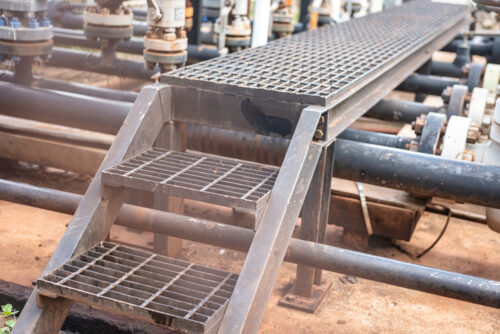
Bar gratings are found in every industry, often in places you don’t even notice. Their versatility allows them to be used in:
- Industrial Facilities: Catwalks, mezzanine flooring, machine platforms
- Municipal Infrastructure: Drainage trench covers, bridge flooring, sidewalks
- Energy & Mining: Oil platforms, refineries, mining access walkways
- Commercial Buildings: Stair treads, rooftop walkways, ventilation grilles
- Public Transit: Platforms, station flooring, pedestrian bridges
- Architectural Projects: Decorative screens, sunscreens, modern facades
Safety and Compliance in Canada
Safety regulations in Canada demand reliable flooring solutions. Bar gratings help industries stay compliant by:
- Providing slip resistance in wet or icy conditions
- Allowing for fire safety ventilation and drainage
- Meeting load-bearing requirements for both pedestrians and vehicles
Environmental and Sustainability Benefits
Modern infrastructure must also consider sustainability. Gratings support environmental goals by:
- Allowing proper stormwater drainage in urban spaces
- Reducing material waste thanks to recyclable steel and aluminum
- Providing long service life, reducing replacement frequency
Longevity and Maintenance
Gratings are designed for decades of use. With proper selection—whether galvanized carbon steel, aluminum, or stainless—they can withstand heavy traffic, corrosive environments, and extreme weather. Maintenance typically involves inspections and occasional cleaning, with minimal replacement costs.
Quick FAQ
What are bar gratings used for?
They are used for walkways, stair treads, drainage covers, and industrial flooring in factories, municipalities, and energy facilities.
Which bar grating type is strongest?
Riveted bar gratings are considered the strongest, especially for areas subject to vibration or fatigue.
What material is best for outdoor use?
Galvanized carbon steel or stainless steel are best for resisting corrosion outdoors.
Can bar gratings be customized?
Yes. They can be manufactured to custom dimensions, spacing, and finishes.
Do bar gratings meet Canadian safety codes?
Yes. When selected and installed properly, they comply with Canadian safety and building standards.
Since 1955, Borden Metal Products (Canada) Ltd. has been a trusted name in bar-on-edge gratings. Based in Beeton, Ontario, we produce a complete line of riveted, welded, pressure locked, and squeeze locked bar gratings in carbon steel, aluminum, and stainless steel.
Our team has built a reputation synonymous with quality and dependability across Canada. If you’re planning a project that requires durable, safe, and long-lasting gratings, we can help.
Contact us today to book a consultation with our experts and explore the right bar grating solution for your needs.
